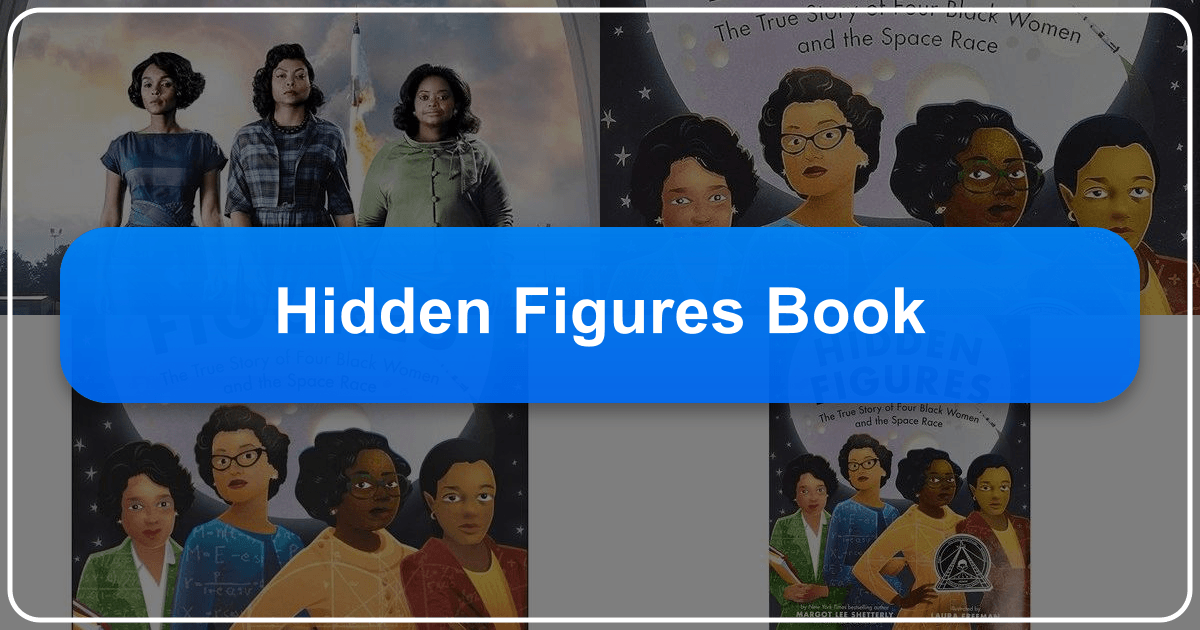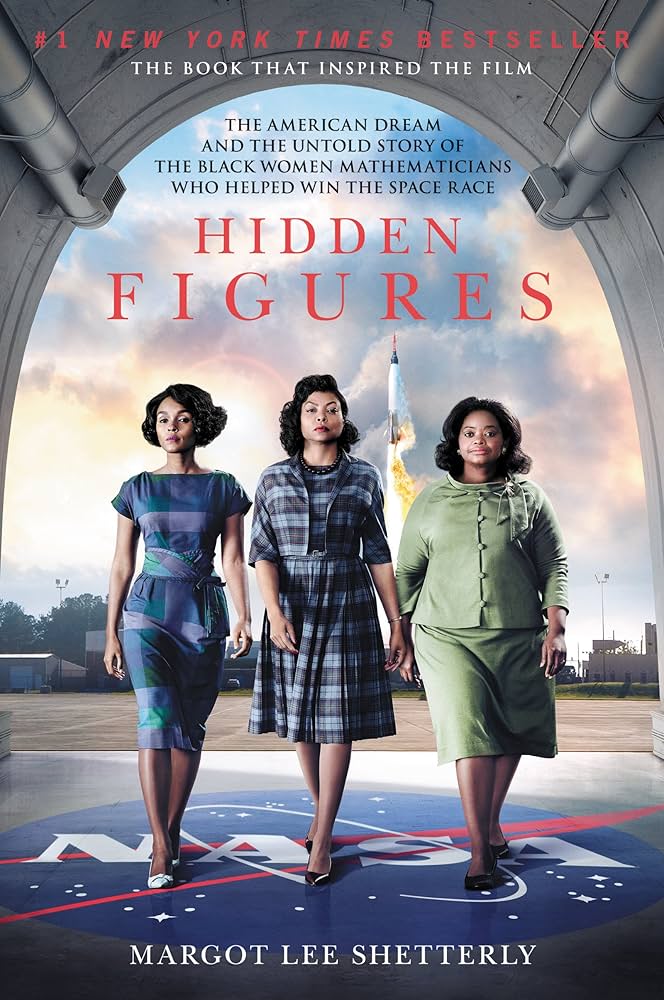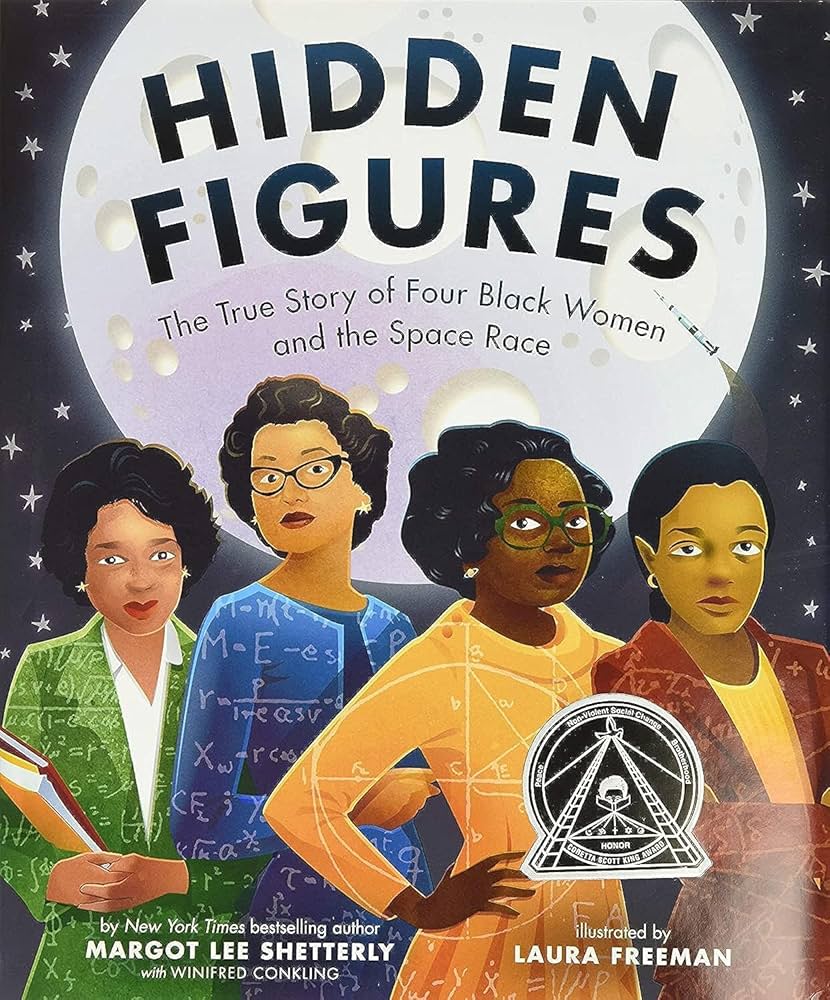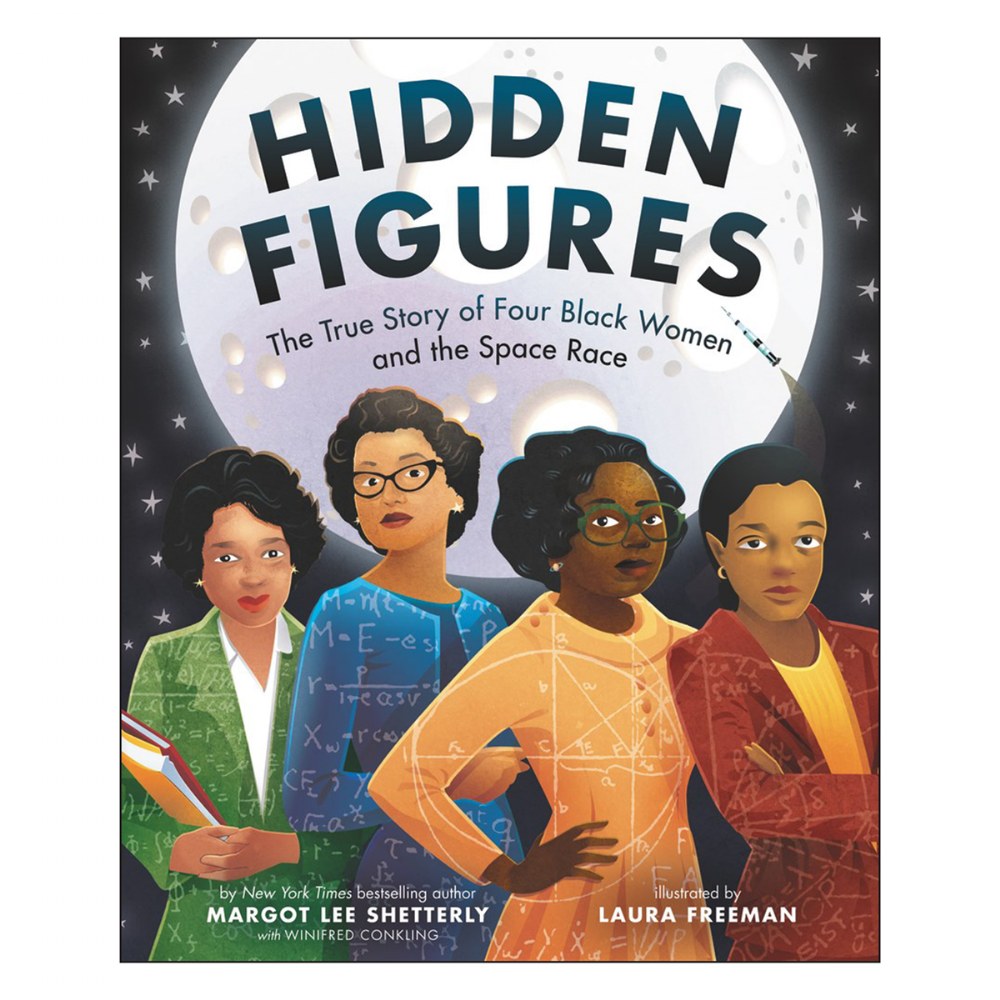Hidden Figures: An In-Depth Exploration of the Book and its Impact

Margot Lee Shetterly’s “Hidden Figures: The American Dream and the Untold Story of the Black Women Mathematicians Who Helped Win the Space Race” is more than just a compelling narrative; it’s a historical revelation, a testament to human perseverance, and a significant cultural touchstone. This article delves into the book’s multifaceted impact, exploring its literary merit, historical accuracy, cultural influence, and the enduring legacy of the women it celebrates. We will examine “Hidden Figures” through the lens of various key topics: its genre and literary standing, the author’s background and writing style, its educational value and life lessons, its impact on libraries and archives, and its broader cultural influence.
The Book: Genre, Reception, and Lasting Relevance

“Hidden Figures” seamlessly blends several genres. Primarily a work of nonfiction, it reads like a captivating biographical narrative, interweaving the individual stories of four exceptional African-American women—Dorothy Vaughan, Mary Jackson, Katherine Johnson, and Christine Darden—with the broader historical context of the mid-20th century. It expertly balances intimate personal accounts with a sweeping historical overview of the Space Race, the Cold War, and the Civil Rights Movement. The narrative’s power lies in its ability to humanize complex historical events, making them accessible and relatable to a wide audience.

The book’s reception has been overwhelmingly positive, earning widespread critical acclaim and commercial success. It achieved the coveted number one spot on The New York Times Non-Fiction Best Sellers list, a testament to its compelling storytelling and the widespread interest in its subject matter. Beyond commercial success, “Hidden Figures” also garnered prestigious literary awards, including the Anisfield-Wolf Book Award for Nonfiction, solidifying its place as a significant contribution to American literature. The book’s enduring relevance stems from its exploration of themes that continue to resonate today: racial and gender inequality, the importance of STEM education, and the power of human resilience in the face of adversity. It serves as a powerful reminder of the often-overlooked contributions of marginalized groups to scientific and technological advancement.

Bestseller Status and Critical Acclaim
The book’s bestseller status isn’t solely due to its timely subject matter. Shetterly’s masterful storytelling weaves together the individual journeys of these women, revealing their intelligence, dedication, and the systemic barriers they faced. The emotional depth of the narrative, combined with meticulous research and compelling prose, captivated readers and critics alike, leading to widespread acclaim and numerous awards. Reviews praised Shetterly’s ability to blend personal narratives with historical context, creating a powerful and engaging read that transcends its subject matter to explore universal themes of perseverance, equality, and the pursuit of dreams. This combination of historical importance and skillful storytelling secured its place as a bestseller and a critically acclaimed work.
Margot Lee Shetterly: Authorial Voice and Inspiration
Margot Lee Shetterly’s background significantly informs her writing. Growing up in Hampton, Virginia, near NASA’s Langley Research Center, she was surrounded by the legacy of the “human computers” and their families. This intimate connection provided her with unique access to untold stories and personal perspectives, adding depth and authenticity to her narrative. Shetterly’s writing style is characterized by clear, concise prose, a meticulous attention to detail, and an empathetic approach to her subjects. She avoids overly sentimental language, instead allowing the women’s accomplishments and struggles to speak for themselves. The author’s careful research and ability to weave together diverse sources—oral histories, archival documents, and personal interviews—create a rich and nuanced historical portrait that is both informative and emotionally resonant.
Biographical Details and Writing Style
Shetterly’s personal connection to the story and the community where it unfolded provides an authenticity that many historical accounts lack. This intimate familiarity is reflected in the conversational yet scholarly tone of her writing. She balances detailed historical research with relatable personal accounts, making the complex world of mathematics and aerospace engineering accessible to a non-specialist reader. Her style avoids sensationalism, focusing instead on showcasing the women’s intelligence, resilience, and dignity. The meticulous detail and depth of her research lend further credibility to the narrative, positioning “Hidden Figures” as a benchmark work in its field.
Reading and Learning: Educational Value and Life Lessons
“Hidden Figures” holds immense educational value, offering a corrective to traditional historical narratives that often overlook the contributions of women and minorities. The book provides an insightful look into the workings of NASA during the early years of the Space Race, demystifying complex scientific concepts and highlighting the crucial role of mathematical calculations in space exploration. Beyond the scientific aspects, the book serves as a potent lesson in social justice, showcasing the challenges faced by African-American women in a deeply segregated society. The narrative offers invaluable life lessons about perseverance, determination, and the importance of fighting for equality and recognition. The resilience demonstrated by Vaughan, Jackson, Johnson, and Darden inspires readers to overcome obstacles and strive for their goals.
Educational Value and Life Lessons
The book offers a powerful interdisciplinary learning experience, encompassing history, mathematics, science, and social studies. Readers gain insight into the scientific complexities of space travel, the social dynamics of racial segregation, and the broader political context of the Cold War. Furthermore, the book is a masterclass in perseverance and resilience. The women’s unwavering dedication to their work despite facing significant adversity serves as an inspiring example for readers of all ages and backgrounds. “Hidden Figures” transcends a simple historical account; it’s a powerful narrative that teaches valuable life lessons about overcoming obstacles, fighting for equality, and the importance of embracing one’s talent and potential.
Libraries and Archives: Preserving the Legacy
The publication of “Hidden Figures” has had a profound effect on libraries and archives. The book has sparked renewed interest in the history of NASA and the contributions of underrepresented groups to STEM fields, leading many libraries to curate and highlight relevant archival materials. Public libraries have used the book as a launching point for discussions and events focused on STEM education, racial equality, and women’s history. Digital libraries have made the book readily accessible to a broader audience, while physical archives have witnessed increased interest in the historical documents related to the lives and work of the women featured in the book. The book’s impact highlights the vital role of libraries and archives in preserving and disseminating historical narratives, especially those that have been marginalized or overlooked.
Impact on Public and Digital Libraries
The book’s popularity has prompted libraries to actively engage with its themes and the broader historical context it explores. This has led to increased funding for programs promoting STEM education, particularly for underrepresented groups, and the creation of specialized collections related to women in STEM and African American history. Digital libraries have facilitated broader access to the book and related materials, while physical libraries host book clubs, discussions, and lectures exploring the themes of racial and gender equality raised by “Hidden Figures.” The book’s accessibility and its relevance to contemporary social issues have ensured its prominent place in library collections globally.
Cultural Impact: Adaptations, Awards, and Communities
The cultural impact of “Hidden Figures” is undeniable. The book’s adaptation into a major motion picture, starring an ensemble cast of acclaimed actresses, brought the stories of Vaughan, Jackson, Johnson, and Darden to a global audience. The film’s success, both critically and commercially, further amplified the book’s message and sparked widespread public discourse on issues of race, gender, and social justice. The numerous awards the book and film have received have further cemented their cultural significance. Furthermore, the book has fostered the creation of online communities and social media discussions that engage with its themes and the legacy of the women it celebrates. This collective engagement emphasizes the power of literature to inspire social change and create lasting cultural impact.
Film Adaptation and Broader Cultural Resonance
The film adaptation of “Hidden Figures” acted as a powerful catalyst for widespread recognition of the achievements of these remarkable women. The movie’s emotional resonance, combined with its star-studded cast, reached a broader audience than the book alone could have. This cinematic adaptation sparked renewed conversations about STEM education, racial inequality, and the contributions of historically marginalized communities to science and technology. The film’s commercial success further cemented its cultural importance and its influence on subsequent discussions surrounding diversity and representation in the sciences. The continued interest in the book and its adaptation, along with the growing body of scholarship on the subject, demonstrates its lasting impact on American culture and beyond.
In conclusion, “Hidden Figures” is a multi-layered work that has transcended its initial publication to become a significant cultural phenomenon. Its literary merit, historical importance, educational value, and impact on libraries and archives all contribute to its enduring legacy. The book serves as a powerful reminder of the importance of recognizing and celebrating the achievements of all individuals, regardless of race or gender, in shaping our history and our future. The lasting cultural impact of “Hidden Figures” solidifies its position not just as a bestselling book but as a catalyst for societal change and a vital contribution to the ongoing conversation about equality and representation.